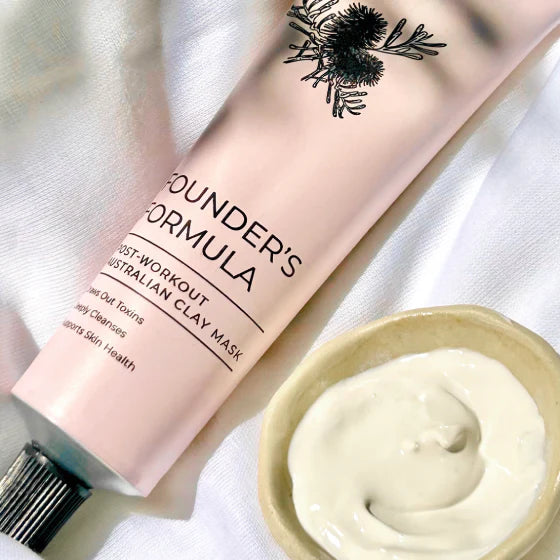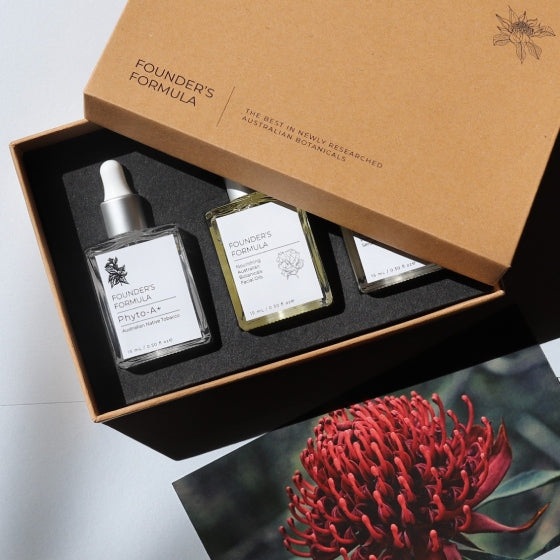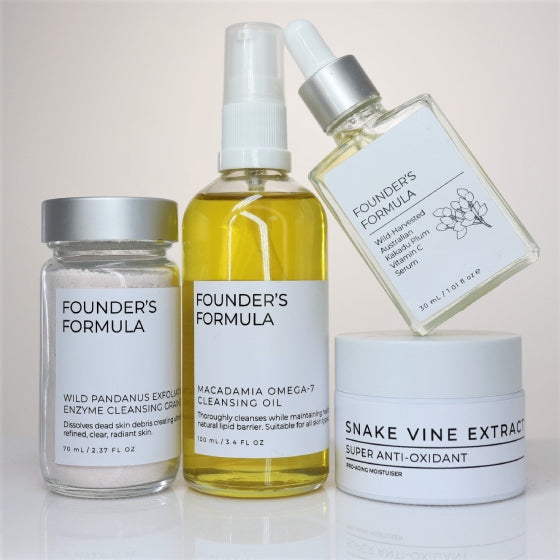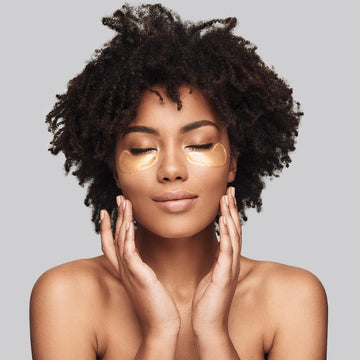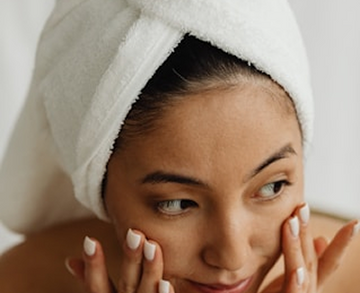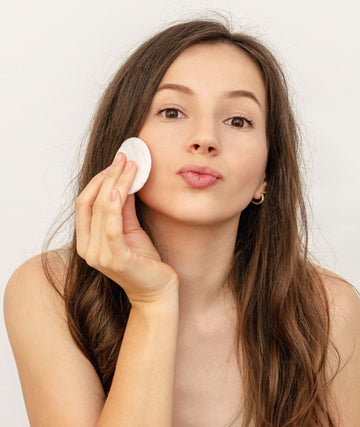Exfoliating cleansers are a popular part of many skincare routines. These products are made to help clear away dead skin cells, unclog pores and smooth out texture, leaving you with softer, brighter skin. Used the right way, they can bring out a smooth complexion without stripping your skin’s natural moisture. But sometimes, even something that seems gentle can cause redness or irritation.
If you’ve ever used an exfoliating cleanser and ended up with flushed, sore or dry skin, you're not alone. There are a few common reasons why redness can happen, even when it feels like you're doing everything right. Whether your skin is signalling that it’s had too much, or the formula doesn’t suit your skin type, it’s worth understanding what might’ve gone wrong. That way, you can fix it without having to overhaul your entire routine.
Reasons Your Exfoliating Cleanser Causes Redness
Redness after using an exfoliating cleanser can be surprising and sometimes uncomfortable. You might see it right away or notice it gradually. In most cases, it’s your skin’s way of letting you know its barrier feels compromised. Below are some common reasons this happens:
1. Over-exfoliation
Using an exfoliating cleanser too often is one of the biggest causes of redness. While it’s tempting to go all in for quick results, overdoing it strips away your protective barrier. This makes your skin more sensitive and reactive. In cooler seasons, when the air is drier and wind is common, skin is already adjusting, and extra exfoliation can be too much. Most people do best with exfoliating no more than two to three times per week, or even less if their skin is dry or easily irritated.
2. Incompatible ingredients
Some cleansers contain strong acids or rough exfoliants that just don't work well with sensitive or reactive skin. Things like synthetic fragrances, alcohol, or scrubs made with harsh particles can damage the skin’s surface. This may cause micro-tears, leading to even more inflammation. High concentrations of certain acids or harsh foaming agents can also trigger a reaction, particularly if your skin barrier is already compromised.
3. Incorrect usage
Even a great formula can cause problems if not used correctly. Common mistakes include using too much product, rubbing it in too firmly or not moisturising after. Exfoliated skin is more exposed, and without added hydration, it can become tight, itchy or red. Hot water can make it worse, as it can strip oils from the skin. Double cleansing or using another active product right after exfoliating may also lead to further irritation.
Noticing any of these issues can help you take a step back and assess what's going wrong. Catching the signs early and switching things up can help avoid long-term damage and get your skin feeling calm again.
Steps To Take If You Experience Redness
If your skin starts to sting or turn red after using an exfoliating cleanser, don’t panic. The first thing to do is to stop using the product. Giving your skin a break is the quickest way to begin the healing process.
Here’s how to reset your routine gently:
- Stop using the exfoliating cleanser right away and avoid other actives or new products for a few days.
- Switch to a calming cleanser or cleansing milk with no added fragrance.
- Apply a hydrating moisturiser morning and night to support your skin’s barrier.
- Use calming ingredients like aloe vera, jojoba oil or panthenol to reduce irritation.
- Avoid any scrubs, acids, or treatments until the redness completely goes away.
- Dry your face with a soft towel by patting, not rubbing.
- Use cool or lukewarm water when cleansing your face.
After a few days, if your skin is looking and feeling better, you can slowly reintroduce exfoliating, but with a lighter hand. Space it out and watch how your skin reacts each day. Less is often more, especially when dealing with post-irritation recovery.
Choosing a Gentle Exfoliating Cleanser
Once redness calms down, take a closer look at the product you were using. Was it too strong, too gritty, or just not designed for your skin type? Choosing a gentle exfoliating cleanser is key to avoiding the same issues in future.
Signs of a better match for sensitive or easily irritated skin include:
- No harsh scrubbing bits like ground seeds or shells
- Calming ingredients such as aloe vera, chamomile or calendula
- A smooth feel on the skin, without foaming up too strongly
- Fine, plant-based exfoliants or mild fruit-derived acids
- Products with minimal or no scent
Australian botanicals like caviar lime offer naturally-grown alpha hydroxy acids (AHAs) that gently exfoliate while also attracting moisture to the skin. Unlike stronger commercial acids, they blend better with sensitive complexions. These ingredients can refresh, brighten and soothe all at the same time.
Here are other ingredients to keep an eye out for:
- Aloe vera: hydrates and soothes dry or red areas
- Chamomile: reduces tightness and eases inflammation
- Calendula: helps ease redness and promotes healing
- Oat extract: good for sensitive or irritated skin
- Cucumber: adds a fresh feel and calms the surface
Also be mindful of added fragrances. These are common culprits behind reactions, especially when synthetic. Choose fragrance-free or lightly scented products that use extracts rather than artificial perfumes.
Always do a patch test before using something new. A simple way is to apply a small amount behind your ear or on the inside of your elbow and leave it on for 24 hours. If no irritation appears, you’re likely good to go.
Skincare Tips To Prevent Redness In The Future
Once your skin’s back on track, a few changes in your overall routine can help prevent this kind of reaction from happening again. It doesn’t mean cutting exfoliation out forever, just being smarter about how you include it.
Consider these good habits for long-term comfort:
- Build a core routine: gentle cleanser, moisturiser, and a broad spectrum sunscreen
- Limit exfoliation to once or twice a week, or follow your skin’s rhythm
- Apply a hydrating serum or moisturiser right after exfoliating
- Don’t layer too many active products at once, especially on the same day
- Always follow exfoliation with SPF during the day to protect fresh skin from UV damage
- Use lukewarm water when cleansing to avoid extra redness
- Work the cleanser in gently with your fingertips rather than scrubbing
Understanding your skin type will also go a long way. Dry and sensitive types tend to need more hydration and less frequent exfoliation. Combination skin may tolerate moderate exfoliation balanced with soothing ingredients. Oily skin often benefits from regular exfoliating but still needs care to avoid overdoing it.
Pay attention to your skin’s behaviour. If you start to feel dryness, tightness or a slight sting, scale back. These are early flags that your skin needs more support and less disruption.
Taking Care of Your Skin for Long-Term Health
It’s frustrating when a product that promises smoothness ends up irritating your skin instead. But that doesn’t mean you have to stop exfoliating altogether. Your skin’s needs change with weather, age and even what else you’re using, so sometimes all it takes is a small shift in product or frequency to keep things on track.
Giving your skin time to breathe, choosing a gentle approach and staying consistent brings far better results than pushing it too hard. With the right balance and ingredients that support the skin instead of stressing it, you’ll be more likely to get the glow you’re after without dealing with the redness.
It’s okay to start small and adjust as you go. Over time, you’ll find what works best and your skin will reflect that care — calm, clear and comfortably smooth.
Adding a gentle exfoliating cleanser to your skincare routine can make a huge difference in how your skin feels and looks day to day. At Founder's Formula, our formulations are enriched with Australian botanicals that refresh, calm and care for sensitive skin without stripping away moisture. Explore how our gentle exfoliating cleanser can help restore balance and glow, no matter your skin type.
